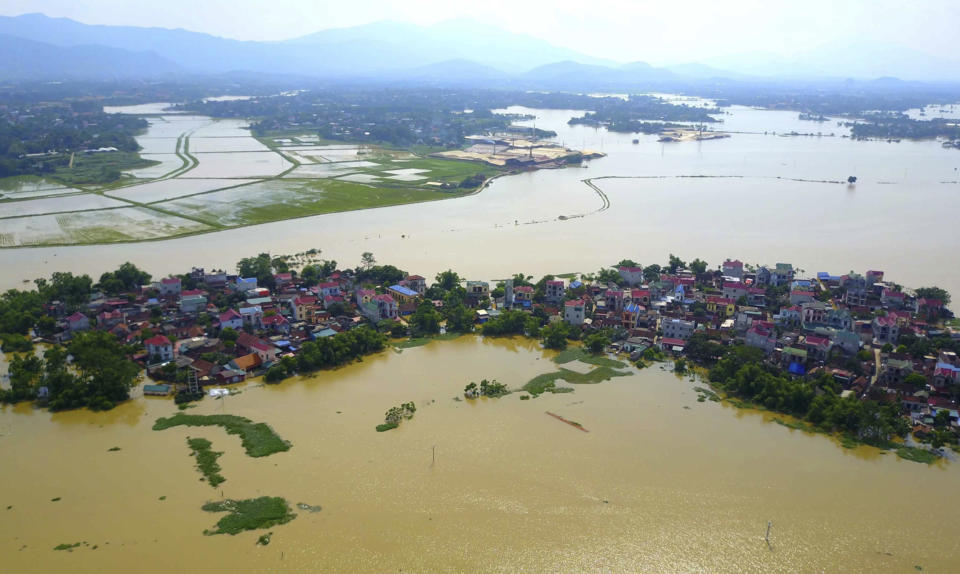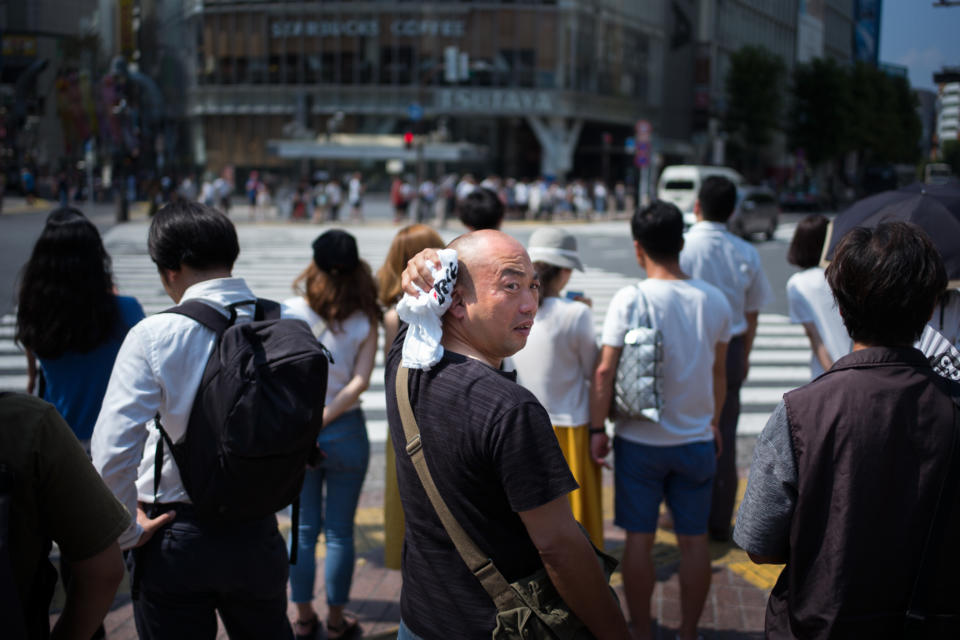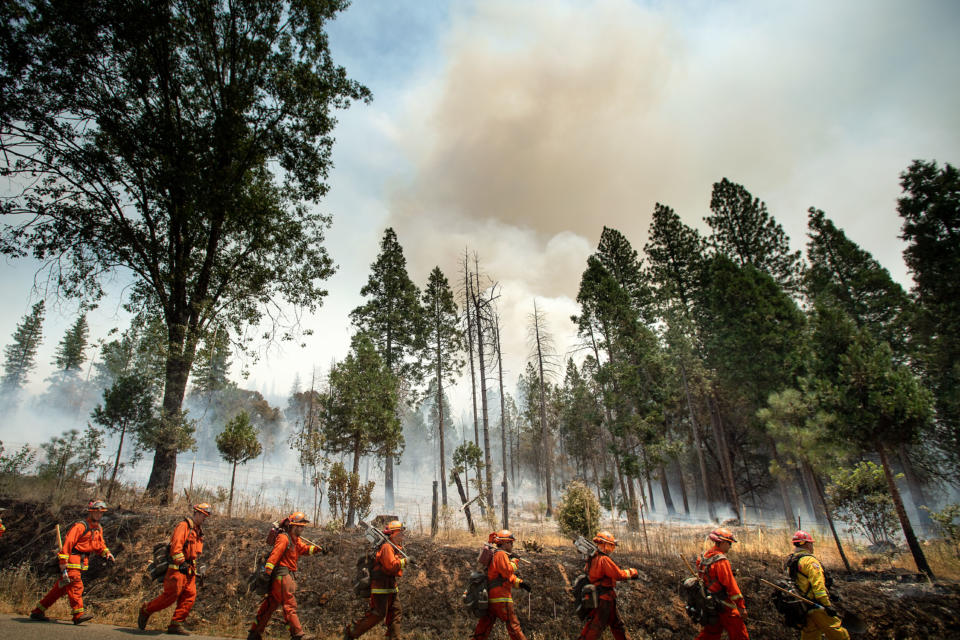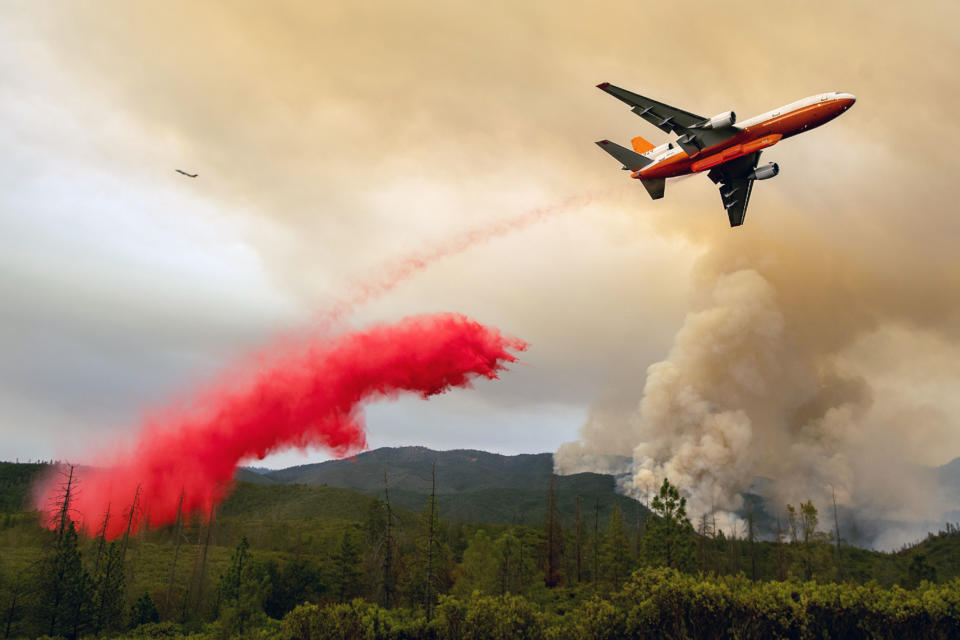From wicked wildfires to fierce flooding, extreme weather is gripping parts of the world with deadly results. CGTN’s Jim Spellman reports.
Flooding in Laos destroyed a hydroelectric dam, leaving hundreds missing and forcing thousands to flee their homes.

Villagers take refuge on a rooftop above flood waters from a collapsed dam in the Attapeu district of southeastern Laos, Tuesday, July 24, 2018. The official Lao news agency KPL reported Tuesday that the Xepian-Xe Nam Noy hydropower dam in Attapeu province collapsed Monday evening, releasing large amounts of water that swept away houses and made more than 6,600 people homeless. (Attapeu Today via AP)
Neighboring floods in Vietnam have killed dozens. “The floods came so quick and it gave us so little time to escape. Some managed to run to high ground but some got swept away in the floods,” Flood Evacuee Luong Van Hung said.

In this photo taken on July 22, 2018, a village is submerged in flood water in the suburb of Hanoi, Vietnam. Flooding triggered by tropical storm Son Tinh has killed at least 20 people and left over a dozen missing in northern Vietnam. (Vietnam News Agency via AP)
A heat wave and drought have led to raging wildfires in Sweden. Meanwhile, at least 65 people have died of heatstroke in an unprecedented heatwave in Japan. More than 20,000 have also been admitted to the hospital.

This handout picture obtained from the European Space Agency (ESA) on July 23, 2018 shows a view which stretches from the west coast of Norway to central Sweden, was captured by Sentinel-3 on 17 July 2018. Here, smoke can be seen billowing from several fires. The closer view was captured on the same day by Sentinel-2. Here, flames and smoke from two of the fires can be seen clearly, along with smoke from other fires in the vicinity. [AFP PHOTO / EUROPEAN SPACE AGENCY (ESA)]

A man wipes perspiration from his head in Tokyo on July 24, 2018, as Japan suffers from a heatwave.
An “unprecedented” heatwave in Japan has killed at least 65 people in one week, government officials said on July 24, with the weather agency now classifying the record-breaking weather as a “natural disaster.” (AFP PHOTO / Martin BUREAU)
In California, fast spreading wildfires have popped up across the state. One fire is threatening the Yosemite National Park.
“We used to call this “the new normal” for this increased frequency of wildfires. However, now it’s just ‘normal’. This is what we’re dealing with,” Erik Scott of the Los Angeles Fire Department said.

Inmate firefighters battle the Ferguson fire in Jerseydale, California, on July 22, 2018. (AFP PHOTO / NOAH BERGER)
In Greenland, an 11-million ton iceberg has floated next to this fishing village If it breaks apart, it could cause a tsunami and flood the town.

A giant iceberg is seen behind an Innaarsuit settlement, Greenland July 12, 2018. (Ritzau Scanpix/Magnus Kristensen/ via REUTERS)
It’s difficult to relate any individual weather events to global warming, but scientists say man-made global climate change is contributing to an increase in extreme weather events.
Keri Fulton explains the global phenomenon of shifting weather patterns
CGTN’s Mike Walter spoke to Keri Fulton about extreme weather patterns around the world. Fulton is an award-winning Environmental and Climate Justice Advocate.
 CGTN America
CGTN America


